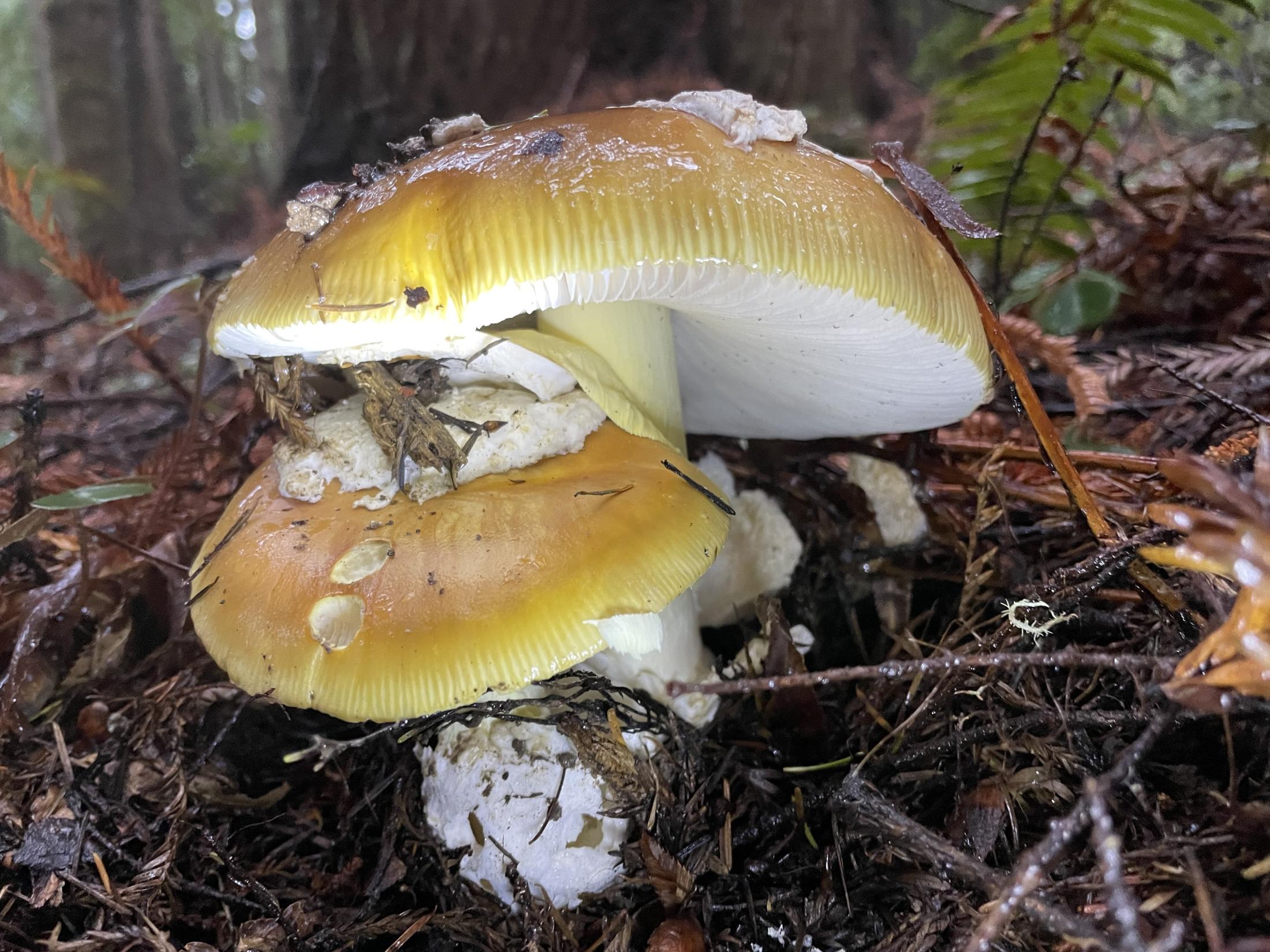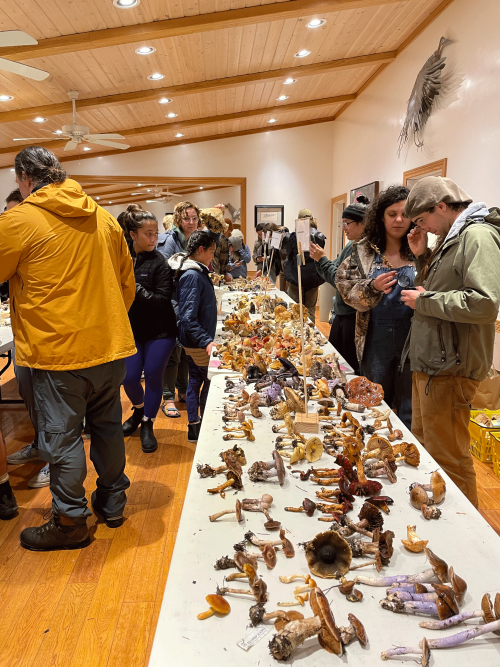
Fungi Scouting Field Trip Yields Edible Finds, Plus Poisonous Ones, too
Mycology Students Search Coastal California for Mushrooms
They had names like Galerina marginata, Helvella dryophila and Ramalina menziesii.
Such was the bounty collected by students from UC Davis and other Bay Area colleges during a weekend fungi hunt field trip along the California coast.
The trip is a beloved tradition and a sought-after adventure for students taking PLP 148: Introductory Mycology, which is the study of fungi like mushrooms, molds and yeasts.
“Usually when you find stuff, it’s really weird,” said Dave Rizzo, chair of the Department of Plant Pathology and the professor for PLP 148.
That included fungi that looked like a cat’s tongue growing out of a tree, a piece of branching coral and even a jelly-like fungi that was visible only when wet. Also found were those poisonous red mushrooms with white spots – Amanita muscaria – similar to what the Smurfs called home. Those are poisonous and the students know not to eat those, Rizzo said.

Hundreds of fungi identified
The field trip, which takes place the weekend before Thanksgiving, began in the 1970s as a joint field trip with UC Berkeley and San Francisco State. It stopped a bit in the late 1990s into the early 2000s before Rizzo picked it back up.
Over the years students have collected more than 800 different types of fungi. This year, 56 UC Davis undergraduate and graduate students took the trip, joining other students from UC Berkeley, CSU East Bay, Chico State and Stanford, rounding out the group to about 100.
Among them they found 257 separate types of fungi. “You get 100 people out there, you find a lot,” Rizzo said. “Some students found really good edibles like chanterelles.”

During the trip students visited different places, such as Van Damme State Park, Jackson State Forest where redwoods and Douglas firs grow and unusual spots, including an abandoned apple orchard.
“You get a lot of students who have never actually been in the forest,” Rizzo said. “Some have never been in a redwood forest.”
They walked in pairs or groups collecting fungi, stopping for a light bite and moving on to another spot. On this Saturday, harsh rain soaked the group as they stopped for a break just before sunset.
“I was pretty taken aback by the sheer number of mushrooms that you could see,” said Kyle Elshoff, a fourth-year student in the mycology class. “You didn’t have to walk far to see mushrooms.”
Learning from experts
At night they gathered at the Albion Field Station operated by Pacific Union College for dinner and to identify and categorize the group’s haul, which was spread out on large, long tables.
“They had all these expert mycologists walking and standing around,” Elshoff said about identifying the mushrooms. “They were there to help you figure it out. It was really pretty seeing them all laid out.”
After spending the night at the field station, they headed home. Some students brought their finds home with them to add to a class project.
Beyond that assignment boost, the trip offers a chance for students, teachers, field experts, teaching assistants, or TAs, to talk, interact and learn in a relaxed environment, Rizzo said. This year the CA&ES Dean’s Office Experiential Learning Fund, which supports hands-on learning, and the department covered the full cost of the trip as part of enhancing the student experience.
“You get to interact with your professors and TAs like you don’t normally do,” Elshoff said. “I hope people can continue to have this field trip experience."
Media Resources
- Dave Rizzo, Department of Plant Pathology, dmrizzo@ucdavis.edu
- Emily C. Dooley, College of Agricultural and Environmental Sciences, ecdooley@ucdavis.edu